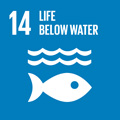- Docente: Marco Lobascio
- Credits: 5
- SSD: L-LIN/12
- Language: English
- Teaching Mode: Traditional lectures
- Campus: Forli
- Corso: First cycle degree programme (L) in Intercultural and Linguistic Mediation (cod. 8059)
-
from Feb 19, 2025 to May 08, 2025
Learning outcomes
The student knows the basic tools (grammar books, dictionaries and corpora of parallel and/or comparable texts) and basic translation methods (reformulation, editing and revision of a target text). S/he is able to apply these tools and methods to the task of translating a variety of texts, even complex ones, from English (as a second language) into Italian. S/he is able to identify and use the most adequate basic translation strategies, depending on the communicative functions of the texts to be translated.
Course contents
Students will be presented with a wide variety of text genres, both literary/journalistic and semi-specialistic. They will also be introduced to a variety of resources (mainly search engines and parallel/comparable texts). Before proceeding to the translation, texts will be carefully analysed in order to identify the most adequate translation approach.
Students will be presented with tools which may be used to support translators, such as search engines and parallel and/or comparable corpora.
Students will also be introduced to self- and other-revision activities, in order to improve their awareness of decision-making in translation.
Readings/Bibliography
Suggested readings
- Bowker, L. & J. Pearson (2002) Working with Specialized Language: a Practical Guide to Using Corpora. London and New York: Routledge.
- Mossop, B. (2007) Revising and Editing for Translators(second edition). Manchester: St. Jerome.
- Munday, J., S. Ramos Pinto & J. Blakesley (2022) Introducing Translation Studies: Theories and Applications. London and New York: Routledge,
- Osimo, B. (2004) Manuale del traduttore. Milano: Hoepli.
- Scarpa, F. (2008) La traduzione specializzata: Un approccio didattico professionale. Milano: Hoepli.
Teaching methods
Lessons will be mostly in the form of workshops/seminars, and active participation of students is expected; during these lessons, activities will include group discussion of translations autonomously prepared by students at home, as well as translation/revision activities in class carried out in small groups. In addition, lectures will be delivered to present tools that can be used to support translators (in particular search engines and corpora).
Students will also be required to hand in one/two assignments, on which the lecturer will provide both individual and collective feedback.
Students are expected to attend at least 70% of the module classes.
Assessment methods
Assessment is by means of a 2-hour written examination at the end of the course. Students will be asked to translate a text (300 words) belonging to one of the text types introduced in class. Students will be allowed to use all the resources presented during the module (search engines and corpora, as well as online and/or paper dictionaries).
Students will also take a mid-term mock exam whose result will not be considered in the computation of the final course mark.
The final mark for the entire course will result from the arithmetic average of the marks obtained in the two constituent modules (Translation from English into Italian and from Italian into English).
Grading scale
30-30L: Excellent level. The candidate possesses excellent translation, with a very high level of competence in the target language.
27-29: Above average level. The candidate makes only minor errors, and shows a solid command of the required skills and competences.
24–26: Generally sound level. The candidate displays a number of shortcomings, indicating a reasonable command of the required skills and competences.
21-23: Adequate level. The candidate displays significant shortcomings and only an adequate command of the required skills and competences.
18–20: Minimum level. The candidate only meets the minimum level required and shows a minimal command of the required skills and competences.
< 18 Fail: The candidate does not meet the required standard and shows a wholly inadequate command of the required skills and competences.
Teaching tools
- Computers with Internet connection (students) and with beamer (lecturer)
- Paper and/or online monolingual and bilingual dictionaries (Italian/English)
- Online translation resources (search engines, terminological databases and comparable texts)
- Virtuale e-learning platform to share texts to be translated and other useful material
Office hours
See the website of Marco Lobascio
SDGs




This teaching activity contributes to the achievement of the Sustainable Development Goals of the UN 2030 Agenda.
